#Black-Tailed Skimmer
Explore tagged Tumblr posts
Text

Black-tailed Skimmer - Ortétrum-de-cauda-negra (Orthetrum cancellatum): male
Cruz Quebrada/Portugal (29/08/2024)
[Nikon D500; AF-S Nikkor 500mm F5,6E PF ED VR; 1/2500s; F5,6; 400 ISO]
13 notes
·
View notes
Text








22/07/24-Hogweed, lady's bedstraw, views, creeping thistle and Ringlet on walks at Lakeside Country Park, petunia and other flowers in an eyecatching colour hanging basket at home and Jackdaw out the front.
Sparrowhawk, House Martin, Great Crested Grebes including the chicks, Gatekeeper, Speckled Wood at Lakeside and in the front garden, beautiful Black-tailed Skimmers, Common Red Soldier beetles enjoyed a lot including mating, meadow crane's-bill, knapweed and red clover were other highlights today.
#hogweed#ringlet#photography#sparrowhawk#jackdaw#birdwatching#black-tailed skimmer#speckled wood#lakeside#walking#walk#2024#outdoors#europe#england#summer#july#dragonfly#common red soldier beetle
7 notes
·
View notes
Text
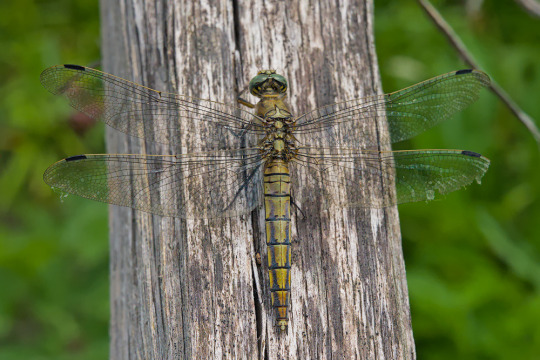
Black-tailed skimmer
#black-tailed skimmer#skimmer#dragonfly#insect#photography#insects#wildlife#nature#environment#animals#animal kingdom#original photographers#photographers on tumblr#lensblr#original photography#pws
8 notes
·
View notes
Text

Black-tailed Skimmer (Female)
A female black-tailed skimmer dragonfly, basking in the sunlight on a plant stem in Brampton Wood.
#black-tailed skimmer#brampton#brampton wood#cambridgeshire#canon#canonuk#dragonflies#dragonfly#fauna#insect#insects#invertebrate#invertebrates#minibeast#minibeasts#nature#nature reserve#odonata#orthetrum cancellatum#outdoors#wildlife#wildlife trust#wildlife trusts#woodland#woods
1 note
·
View note
Text
Butterflies and Dragonflies in Greenwich
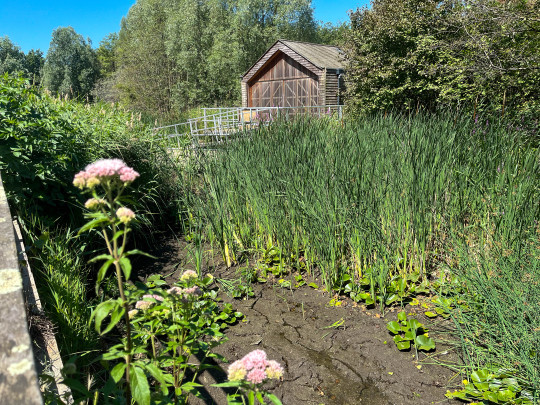
View On WordPress
#Black-Tailed Skimmer#Common Darter#Common Tern#Greenwich Ecology Park#Marbled White#Roesel&039;s Bush-cricket#Vanbrugh Pits
0 notes
Text



Black-tailed skimmer/större sjötrollslända, Four-spotted chaser/fyrfläckad trollslända and Large white-faced darter/citronfläckad kärrtrollslända. Nötön-Åråsviken nature reserve in Värmland, Sweden (June 18, 2024).
#black tailed skimmer#four spotted chaser#large white-faced darter#dragonflies#insects#nötön-åråsviken
109 notes
·
View notes
Text

An immature male black tailed skimmer (Orthetrum cancellatum) in The Burren, Ireland
by Charles Sharp
#black tailed skimmer#dragonflies#orthetrum cancellatum#orthetrum#Libellulidae#odonata#insecta#arthropoda#wildlife: ireland#wildlife: europe
31 notes
·
View notes
Text

Four culturally significant aquatic birds in Imperial Wardin- the skimmer gull, the albatross, the reed duck, and the hespaean.
The skimmer gull is a small seabird, distinguished by bright red beaks and a single, trailing tail plume. These are sacred and beloved animals with a long history of symbiosis with local fishers. They will intentionally attract the attention of fishermen, bringing them to shoals of fish that are too deep below the surface for the birds to reach. They then will snatch fish fleeing or caught in the nets, and will often be directly fed by their human assistants in an act of gratitude. They benefit tremendously from their sacred status and a taboo against killing or harming them, and can become absolute food-stealing menaces in seaside towns and cities.
The albatross is a seasonal visitor to the region, with this population migrating to small rocky islands in the White Sea to breed. The specific species occurring in this region is on the smaller side, and has a pale pink beak and soft orange legs. Albatrosses are common characters in regional animal folktales (usually as foolish, romantic types), and sometimes appear in tales as shapeshifters, usually turning into young women who have tumultuous affairs with lonely sailors.
Skimmer gulls and albatross are the most sacred animals of Pelennaumache, the face of God which looks upon the ocean, the winds, storms, maritime trade, fisheries, and broader concepts of luck and the infliction and deflection of curses. Killing either of these birds is considered to bring about disastrous bad luck (unless in the context of a proper sacrifice, most commonly in rites to bless ships and/or sailors with good winds and against ill fortune). The eggs of skimmer-gulls are free game and considered delicacies, while the preciousness of the albatross' single egg clutch is recognized and their consumption is generally discouraged (this isn't to say it doesn't happen).
Feathers of rightly sacrificed albatross and skimmer gulls are minor holy relics (ESPECIALLY gull tail plumes), and considered to be the ultimate good luck charm. The fortuitous find of a shed feather can also impart good luck and can be very valuable (the birds are sometimes poached for their feathers, though fears of the consequences are enough that this poaching is limited in scope). You will often see wealthier people wearing the feathers in hats and headdress, and any seafaring vessel worth its salt should have at least one aboard.
Both birds are evoked in the apotropaic Skimmer-Woman motif (in practice it generally has albatross characteristics, though is sometimes depicted with the tail plume of the gull).
The hespaean is a very unusual bird with two distinct species native to the region, one found exclusively in the western Black river system and its estuaries, and one found in the eastern Brilla and Kannethod river systems. They have very small pointed teeth in their bills, a trait virtually unknown outside of the flightless, beakless classes of birds (most prominently qilik). Their wings are vestigial and virtually nonexistent (with only two bony spurs remaining). These birds are almost exclusively aquatic and do not normally emerge onto land (they cannot walk upright at all, and must push themselves on their bellies). The legs of the Black river hespean develop blue pigmentation from their diet (the brighter the blue, the better fed and healthier the bird), which are waved above the surface during elaborate courtship displays. Both species are known for their haunting, warbling cries (very much like a loon, but more of a howling noise that develops into a shrill warble).
Hespaean build their nests in dense beds of reeds or small, vegetation-heavy river islands that provide some protection from predators. They raise their young during the height of the dry season (when more nesting surfaces are available and they can feed their young with more concentrated fish populations), which is an image of hope and resiliency during harsh dry times and the promise of the river's eventual bounty.
It is known that hespaean used to be caught as chicks and raised to help people catch fish (with ropes around their necks to prevent them from swallowing their catch). This practice is now very rare in the Imperial Wardi cultural sphere (mostly still practiced by the Wogan people along the Kannethod river, to whom these birds are also venerated animals) and has been largely replaced with the import of domesticated cormorants from the Lowlands to the southeast (which are more easily trained and can Usually be trusted not to attempt to swallow their catch).
These birds require large rivers that flow year round and have healthy, dense fish stocks. The population is in decline and they are now relatively rare, largely due to development and overfishing around rivers (and on a much larger timescale, the region becoming drier and water levels more irregular, and their competition with more versatile freshwater tiviit).
The reed duck is a migratory freshwater duck whose coming heralds the beginning of the wet season. They come to mate along rivers and wetlands during the final stretches of the dry season, timing their eggs to hatch with the rise in water levels and growth of the vegetation and insects they feed on. They have striking red-brown and gray plumage and very little sexual dimorphism (though the male is somewhat brighter in color and the flesh around the bill turns bright red during the breeding season).
Reed ducks are not domesticated, but some populations are semi-tamed and encouraged to return to certain sites to breed (the riverside temple to Anaemache in Ephennos attracts a massive flock of the ducks every wet season, continually blessing it with their presence and coating its grounds in droppings), and these stocks are the primary source of sacrificial ducks and coveted shed feathers.
Hespaean and reed ducks are the most sacred animals of Anaemache, the Face of God which looks upon freshwater (particularly rivers), rains, seasonal flooding, fertile earth/seasonal fertility, and wild plant life.
The hespaean is representative of Anaemache as the River Itself and the river as a provider of fish. This association comes down to their all-seasons presence in the rivers, and their population density being a signal of a healthy, well-flowing river with good fish stocks. Lands adjacent to hespean territory is often the most reliable and bountiful for human subsistence.
The reed duck in particular is the most venerated sacred animal of Anaemache, as representatives of Anaemache as a Face of seasonal fertility. Its coming announces the return of the rains and seasonal flooding that the region's agriculture relies on, and their cycle of fertility closely matches the cycles of the rivers and that of the earth itself (with their new life emerging with rains, flooding, and new vegetation in the wet season). There is no prohibition on hunting reed ducks (though proper rites and respect are expected for a sacred animal), and their meat and eggs is said to support female fertility and a healthy pregnancy.
#Hespaean are what I've been repeatedly misspelling as hespiornis up until now (got kind of lazy with the 'hespaean' name but the -an root#is established and makes sense). They're derived hesperornithes that have survived up to the present day but near exclusively as#smaller freshwater birds (their larger marine counterparts have been mostly displaced by tiviit and uhrwal)#Hespaean species exist outside of this region and have a worldwide (but highly fragmented and isolated) distribution#creatures
208 notes
·
View notes
Text

The Twelve-spotted Skimmer
On a very overcast, hot and muggy day, I captured this image of a Twelve-spotted Skimmer (Libellula pulchella) dragonfly. Using an 18-135mm kit lens, I got close to the dragonfly perched on a thin reed by the edge of a small man-made pond. The background is the calm water of a man-made pond, adding a peaceful feel to the scene. The dragonfly’s wings have striking black and white spots, and its delicate details stand out beautifully against the soft, muted backdrop.
The Twelve-spotted Skimmer is a common North American dragonfly, found in southern Canada and across all 48 contiguous U.S. states. This large species measures about 50 mm (2.0 in) long. Each wing has three brown spots. In adult males, additional white spots form between the brown ones and at the bases of the hindwings, sometimes earning them the name "ten-spot skimmer." If given time to count, you can see a total of twelve black spots on all four wings of the male, with eight bright white spots in between. Females and immature males have the twelve brown-black spots but lack the white ones, making it still acceptable to call them all twelve-spotted. Males have a powdery blue abdomen or 'tail,' while females have a mostly black tail with a long yellow stripe on each side. Adults feed on small flying insects.
Twelve-spotted Skimmers are usually found near water. Females lay eggs in ponds, lakes, or slow-moving streams and rivers, where they hatch into naiads. The naiads look more like crustaceans than dragonflies and spend their early life stage underwater. After feeding and growing, they eventually crawl out of the water and molt into winged adults. This species is common across North America and is mostly active in the summer. Look for these large, robust skimmers near water's edge by lagoons, creeks, ponds, and lakes.
Processed with Affinity Photo v2 and Topaz Photo AI.
Camera: Pentax K-3
Lens: smc PENTAX-DA 18-135mm F3.5-5.6 ED AL [IF] DC WR
135mm / ƒ/11 / 1/80s / ISO 400
Taken: July 16, 2024
#photographer on tumblr#original photographers#original photography#macro photography#dragonfly#Twelve-spotted Skimmer#Libellula pulchella#insect#canada#ontario#where I live#summer#July#2024#pentax#pentaxian#pentax k3#Affinity Photo#Topaz Photo AI
12 notes
·
View notes
Text

A collage I made a few years ago, or some of my favorite animals featured in Wild Kratts.
I love the animation for this show, all the animals have so much personality while still looking pretty dang accurate.
Animals in this collage:
Chinese pangolins (accidentally put that picture in there twice)
Black-footed ferrets
Secretary bird
Antelope jackrabbit
Pronghorns
Peregrine falcon and chicks
American pine marten
American kestrel
Burrowing owl
Canada lynx
Golden-tailed sapphire (hummingbird)
Streaked tenrec
Loggerhead shrike
Elf owl
Bobcat
Fire salamander
Purple martin
Superb bird-of-paradise
Hawksbill sea turtle
Black-capped chickadee
Great emerald pondhawk (dragonfly)
Emerald-chinned hummingbird
Great blue heron
Arctic wolf
Cheetah
African crested porcupine
Pileated woodpecker
European hedgehog
Blue jay
Dyeing poison dart frog
Bald eagle
Nile crocodile
American robin
Manta ray
Bat-eared fox
African wildcat
Red panda
Osprey
Golden bamboo lemur
Ocelot
Tokay gecko
Thomson’s gazelle
Wandering glider/globe skimmer (dragonfly)
Green heron
Spotted eagle-owl
Gray wolves
Prairie falcon
Green-breasted mango (hummingbird)
Dholes
Husky dog
Three-toed sloth
Eastern screech-owl
#my edits#wild kratts#birdposting#I guess#there are …#(counts on fingers)#…….#21 species of birds in this collage#i think
14 notes
·
View notes
Text

male black-tailed skimmer (orthetrum cancellatum)
12 notes
·
View notes
Text

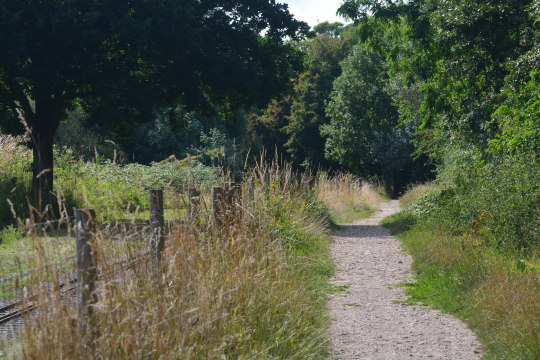
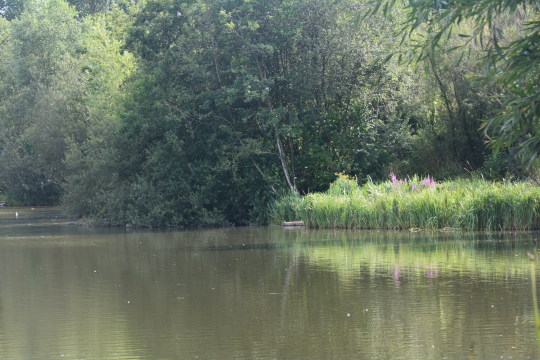


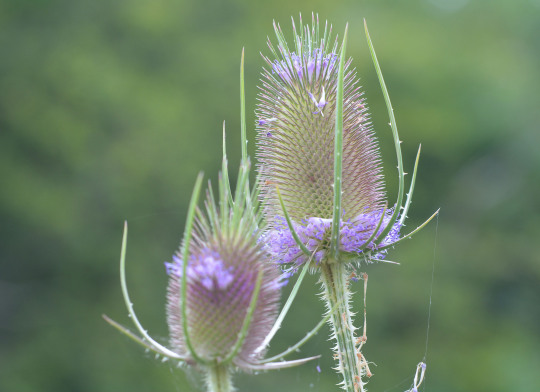
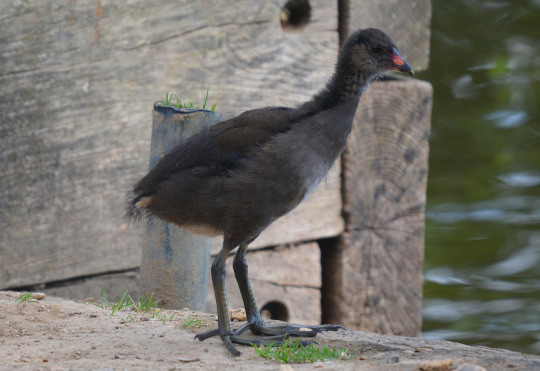

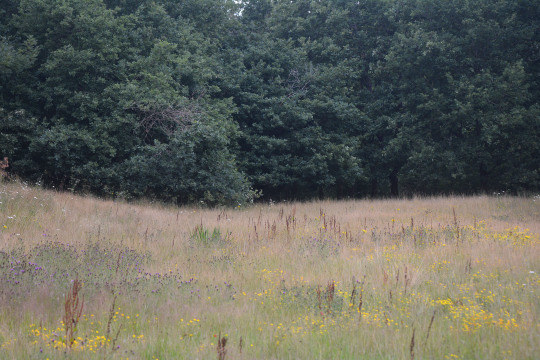
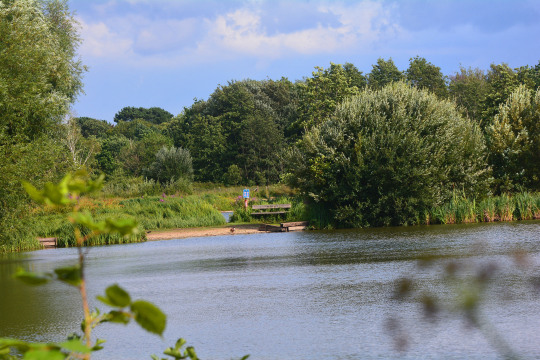
21/07/2023-Lakeside and home
Photos taken in this set: 1. Carrot. 2, 3, 4, 9 and 10. Views on two great walks today. 5. Starling in the garden. 6. Teasel. 7. A lovely young Moorhen I enjoyed seeing, they have great stark colours and I saw Moorhens well generally today. 8. One of a couple of Collared Dove I really liked seeing at Lakeside, I'm more used to seeing them at home so it's always a novelty seeing them at Lakeside.
Alongside the geese and butterflies and moths mentioned in my last two posts about today, I enjoyed seeing House Martins delightful birds sailing through the air and hearing Chiffchaff well beside the lakes on both walks. Other highlights today were; seeing both families of Great Crested Grebes and lots of Mallards well again, Blackbird, Robin, Blue Tit, good views of Feral Pigeon and Magpie, Black-tailed Skimmer, Common Red Soldier beetles, burdock I believe greater burdock, dark mullein, knapweed, thistle including fluffy seed heads which were illuminated by the evening sun that I enjoyed today, daisy, agrimony, hemp agrimony, St. John's-wort, meadow crane's-bill, herb-Robert, purple loosestrife, red bartsia which is coming into its own here now and cuckoo-pint. Woodpigeon, House Sparrow and Lesser Black-backed Gull out the front were other great birds to see at home today with bees flitting around the lavender seen well in the front garden and buddleia and agrimony and other flowers I liked seeing in the garden.
#photography#house martin#agrimony#uk#great crested grebe#starling#home#lakeside country park#red bartsia#collared dove#teasel#black-tailed skimmer#wildlife#england#world#nature#happy#friday#week day#weekend#2023#europe
22 notes
·
View notes
Text
List of Birds organized by Order + locations:
Accipitriformes:
Bearded vulture
Cooper's hawk
Osprey
Red-shouldered hawk
Steller's sea eagle
Anseriformes:
Bar-headed goose
Barnacle goose
Black swan
Common merganser
Red-breasted goose
Snow goose
Trumpeter swan
Apodiformes:
Common swift
Ruby-throated hummingbird
Bucerotiformes:
Eurasian hoopoe
Cariamiformes:
Red-legged seriema
Casuariiformes:
Emu
Southern cassowary
Cathartiformes:
Black vulture
Turkey vulture
Charadriiformes:
American oystercatcher
Atlantic puffin
Black-headed gull
Black skimmer
Black-tailed godwit
European herring gull
Killdeer
Northern lapwing
Ruddy turnstone
Ciconiiformes:
White stork
Columbiformes:
Common wood pigeon
Eurasian collared dove
Luzon bleeding-heart
Nicobar pigeon
Victoria crowned pigeon
Coraciiformes:
Blue-capped kingfisher
Common kingfisher
Cuculiformes:
Asian koel
Greater roadrunner
Yellow-billed cuckoo
Eurypygiformes:
Kagu
Falconiformes:
American kestrel
Common kestrel
Galliformes:
Palawan peacock-pheasant
Scaled quail
Western capercaillie
Gaviiformes:
Common loon
Gruiformes:
American coot
Australasian swamphen/pūkeko
Blue crane
Common moorhen
Sandhill crane
Sora
Whooping crane
Passeriformes:
American bushtit
American robin
Australian raven
Baltimore oriole
Barn swallow
Black-billed magpie
Black-capped chickadee
Black-throated sparrow
Blue-headed vireo
Blue jay
Bluethroat
Brown thrasher
California towhee
Canada warbler
Canyon wren
Cedar waxwing
Common blackbird
Common chlorospingus
Common raven
Eastern wood pewee
Eurasian blue tit
Eurasian bullfinch
Eurasian golden oriole
Eurasian jay
Eurasian magpie
European robin
Goldcrest
Great-tailed grackle
Great tit
Hooded crow
House sparrow
Indigo bunting
Kirtland's warbler
LeConte's sparrow
Long-tailed tit
Mexican jay
Painted bunting
Phainopepla
Pine siskin
Pin-tailed whydah
Pinyon jay
Pygmy nuthatch
Red winged blackbird
Rook
Saltmarsh sparrow
Satin bowerbird
Spotted towhee
Steller's jay
Tufted titmouse
Wallcreeper
Warbling vireo
Western tanager
White-breasted nuthatch
White-throated dipper
White-throated magpie-jay
Yellow-rumped warbler
Pelecaniformes:
Brown pelican
Great blue heron
Great egret
Great white pelican
Least bittern
Roseate spoonbill
Shoebill stork
Snowy egret
Phoenicopteriformes:
American flamingo
Chilean flamingo
Piciformes:
Acorn woodpecker
Clark's nutcracker
Lewis's woodpecker
Northern flicker
Pileated woodpecker
Red-bellied woodpecker
Red-headed woodpecker
Podargiformes:
Tawny frogmouth
Podicipediformes:
Pied-billed grebe
Procellariiformes:
Wilson's storm-petrel
Psittaciformes:
Australian king parrot
Chestnut-fronted macaw
Citron-crested cockatoo
Cockatiel
Galah
Gang-gang cockatoo
Pacific parrotlet
Rose-ringed parakeet
Sulphur-crested cockatoo
Strigiformes:
Barn owl
Barred owl
Eurasian eagle-owl
Suliformes:
Anhinga
Blue-footed booby
Double-crested cormorant
Trogoniformes:
Elegant trogon
Locations:
Africa
America
Antarctica
Asia
Australia
Central America
Eurasia
Europe
North America
Oceania
South America
7 notes
·
View notes
Text

Black-tailed Skimmer
A female black-tailed skimmer dragonfly, soaking up the sunlight at Felmersham Gravel Pits.
#bedfordshire#black-tailed skimmer#canon#canonuk#dragonflies#dragonfly#felmersham#felmersham gravel pits#insect#insects#invertebrate#invertebrates#minibeast#minibeasts#nature#nature reserve#odonata#orthetrum cancellatum#outdoors#wildlife#wildlife trust#wildlife trusts
0 notes
Text

[1277/10977] Black-tailed Gull - Larus crassirostris
Order: Charadriiformes Suborder: Lari Family: Laridae (gulls, terns and skimmers)
Photo credit: Eric VanderWerf via Macaulay Library
38 notes
·
View notes
Text

Black-tailed Skimmer, Orthetrum cancellatum Canon 5D3 Sigma 105 2.8 f/7.1 1/ 320 iso 160 Srbsko, Czech Republic 6/4/2023
#odinata#Orthetum#Darters#dragonflies#damselflies#insects#macro#wetlands#invertebrates#insectphotography#macrophotography#insect#canon#grasslands
7 notes
·
View notes